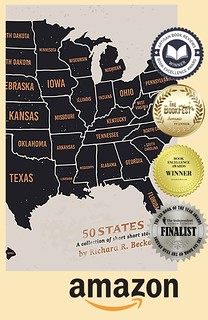Larry Dignan, writing for ZDNet, was covering the Gartner Symposium when analyst Andrew Frank laid out a scenario where marketing, data and IT will come together so algorithms will find and use so-called influencers. It's part of what many marketers consider to be the holy grail of marketing.
In this case, Gartner believes that it will produce a new area of specialty that it has dubbed influence engineering. Let's hope not. While data, marketing, psychology, and analytics could use some convergence, the direction is continually plagued by an overemphasis on developing one-way communication that drives action through influential third parties. That tactic already has a name.
It's called propaganda and it's a big step backwards.
The dream of some marketers is becoming increasingly simplified under the banner of influence. They want to be able to reach consumers through third-party influencers in order to make purchases.
The idea is so old, it was nearly perfected by the father of modern public relations. Edward Bernays was a pioneer in manipulation by fusing media and communication with crowd psychology and psychoanalysis. He frequently used the media as his influencer, given the power it had at the time.
It worked so well as a dubious proposition that future public relations practitioners would spend the next century attempting to distance themselves from the work and toward a more enlightened concept, Scott Cutlip, the father of public relations education, among them. Rather than resort to using big data to identify and manipulate, he forwarded the concept that big data was best used as a measure from which an organization could realign itself in the public interest.
As a result, influencers were just as likely to reinforce the organizational message and brand perception in following public opinion as they were to be coerced by manipulated influencers. In other words, the difference between the two is philosophical. Specifically, it is tied to who changes and by how much.
The difference between propaganda and public interest.
It's plainly simple. One marketer hopes to listen, analyze, and then market an adjusted message in the hopes of changing behavior to preset measurable outcomes. The other listens, realigns (sometimes at the core product level), and then reinforces how they meet or exceed public interest and expectation.
The tendency for marketers to attempt the other approach — manipulation — frequently wins out. It's also the very reason that many marketers eventually need to use their crisis communication plan, assuming they have one. They overreach by trying to perfect an image that they cannot hope to meet.
That is not to say Gartner is all wrong in its thinking. It is right that the science of psychology can link data architects and marketers. But where it is off the mark is in thinking that chasing down patterns of influence is the right use or that optimizing pitches is the crux of a successful business.
It's very much the opposite. Some of the most successful businesses and agencies in the world operate on the principle that the better they understand the consumer, the better they can meet customer needs. In other words, you don't have to optimize a pitch when you've optimized the product or service offering. And the way to remember this critical fact is to always ask who changes and by how much.
In this case, Gartner believes that it will produce a new area of specialty that it has dubbed influence engineering. Let's hope not. While data, marketing, psychology, and analytics could use some convergence, the direction is continually plagued by an overemphasis on developing one-way communication that drives action through influential third parties. That tactic already has a name.
It's called propaganda and it's a big step backwards.
The dream of some marketers is becoming increasingly simplified under the banner of influence. They want to be able to reach consumers through third-party influencers in order to make purchases.
The idea is so old, it was nearly perfected by the father of modern public relations. Edward Bernays was a pioneer in manipulation by fusing media and communication with crowd psychology and psychoanalysis. He frequently used the media as his influencer, given the power it had at the time.
It worked so well as a dubious proposition that future public relations practitioners would spend the next century attempting to distance themselves from the work and toward a more enlightened concept, Scott Cutlip, the father of public relations education, among them. Rather than resort to using big data to identify and manipulate, he forwarded the concept that big data was best used as a measure from which an organization could realign itself in the public interest.
As a result, influencers were just as likely to reinforce the organizational message and brand perception in following public opinion as they were to be coerced by manipulated influencers. In other words, the difference between the two is philosophical. Specifically, it is tied to who changes and by how much.
The difference between propaganda and public interest.
It's plainly simple. One marketer hopes to listen, analyze, and then market an adjusted message in the hopes of changing behavior to preset measurable outcomes. The other listens, realigns (sometimes at the core product level), and then reinforces how they meet or exceed public interest and expectation.
The tendency for marketers to attempt the other approach — manipulation — frequently wins out. It's also the very reason that many marketers eventually need to use their crisis communication plan, assuming they have one. They overreach by trying to perfect an image that they cannot hope to meet.
That is not to say Gartner is all wrong in its thinking. It is right that the science of psychology can link data architects and marketers. But where it is off the mark is in thinking that chasing down patterns of influence is the right use or that optimizing pitches is the crux of a successful business.
It's very much the opposite. Some of the most successful businesses and agencies in the world operate on the principle that the better they understand the consumer, the better they can meet customer needs. In other words, you don't have to optimize a pitch when you've optimized the product or service offering. And the way to remember this critical fact is to always ask who changes and by how much.
























